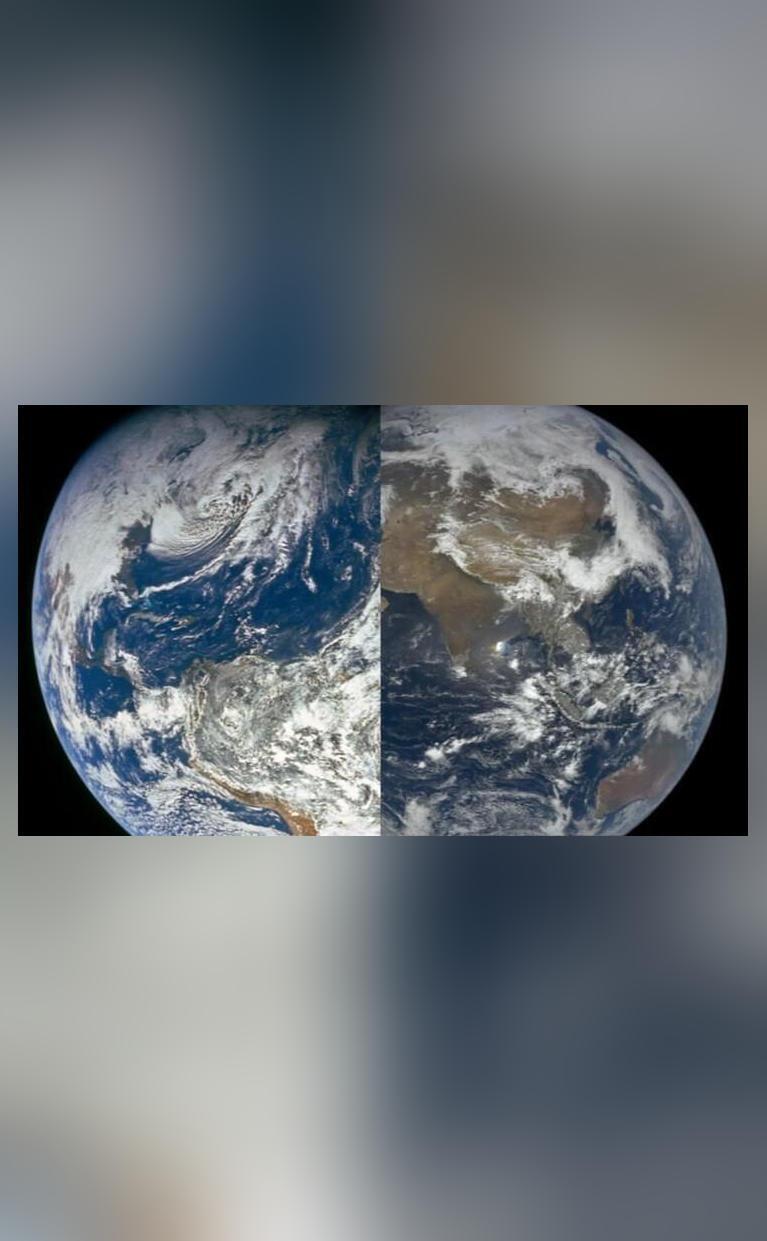
Pics show how Earth changed in 60 years of climate change
The Earth, our home planet, has undergone significant changes over the past 60 years, and the impact of climate change is evident in the most astonishing ways. A recent picture shared by NASA has left us stunned, showcasing the drastic transformation of our planet. The picture, taken from NASA’s EPIC camera onboard the DSCOVR spacecraft, highlights the effects of increased pollution levels on the Earth’s appearance from space.
To put this into perspective, let’s take a trip down memory lane. In 1968, Apollo 8 astronauts shared a picture of the Earth, which depicted a blue and radiant planet. The iconic image, often referred to as the “Blue Marble,” captured the imagination of people worldwide, symbolizing the beauty and fragility of our home planet.
Fast-forward to today, and the picture shared by NASA presents a stark contrast. The Earth, once a radiant blue, has morphed into a dull, ash-grey hue. The transformation is a testament to the devastating impact of climate change on our planet.
So, what has caused this drastic change? The answer lies in the increased levels of pollution and human activity over the past six decades. The rise in greenhouse gas emissions, deforestation, and industrialization have all contributed to the degradation of our planet’s atmosphere.
One of the most significant changes is the increase in aerosol pollution. Aerosols are tiny particles suspended in the air, which can come from natural sources like dust and pollen or human activities like industrial processes and vehicle emissions. These particles can scatter sunlight, giving the Earth its dull, grey appearance.
Another key factor is the rise in global temperatures. Climate change has led to an increase in extreme weather events, such as heatwaves, droughts, and storms. These events not only have devastating consequences for the environment but also disrupt the natural balance of our planet.
The NASA picture also highlights the impact of human activity on the Earth’s oceans. The increased levels of pollution and plastic waste have led to the formation of “dead zones” in the oceans, where marine life struggles to thrive. The decline of marine ecosystems has far-reaching consequences for our planet’s biodiversity and ecosystem health.
The effects of climate change are not limited to the Earth’s atmosphere and oceans alone. Rising temperatures have led to the melting of polar ice caps, causing sea levels to rise and threatening coastal communities and ecosystems. The loss of Arctic sea ice has also disrupted global weather patterns, leading to more frequent and intense weather events.
So, what can we do to mitigate the effects of climate change? The answer lies in collective action and a commitment to sustainability. Governments, corporations, and individuals must work together to reduce greenhouse gas emissions, increase renewable energy production, and promote sustainable practices.
The picture shared by NASA serves as a stark reminder of the urgent need for climate action. It is a call to arms, encouraging us to take responsibility for our actions and to work towards a more sustainable future.
In conclusion, the recent NASA picture is a poignant reminder of the devastating impact of climate change on our planet. The transformation from a radiant blue to a dull, ash-grey hue is a powerful visual representation of the consequences of human activity. It is our responsibility to take action, to reduce our carbon footprint, and to promote sustainability. The future of our planet depends on it.






